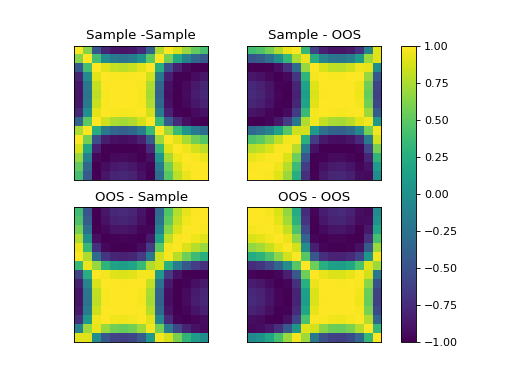Examples
Some examples of what is possible. Please refer to the rest of the documentation for more examples.
Training and tuning an LS-SVM
import kerch
tr_set, _, _, _ = kerch.dataset.factory("two_moons", # which dataset
tr_size=250) # training size
mdl = kerch.model.LSSVM(type="rbf", # kernel type
representation="dual") # initiate model
mdl.set_data_prop(data=tr_set[0], # data
labels=tr_set[1], # corresponding labels
proportions=[1, 0, 0]) # initiate dataset
mdl.hyperopt({"gamma", "sigma"}, # define which parameters to tune
max_evals=500, # define how many trials
k=10) # 10-fold cross-validation
mdl.fit() # fit the optimal parameters found
kerch.plot.plot_model(mdl) # plot the model using the built-in method
Out-of-sample normalized and centered kernels
import kerch
import numpy as np
from matplotlib import pyplot as plt
sample = np.sin(np.arange(0,15) / np.pi) + .1
oos = np.sin(np.arange(15,30) / np.pi) + .1
k = kerch.kernel.factory(type="polynomial", sample=sample, center=True, normalize=True)
fig, axs = plt.subplots(2,2)
axs[0,0].imshow(k.K, vmin=-1, vmax=1)
axs[0,0].set_title("Sample -Sample")
axs[0,1].imshow(k.k(y=oos), vmin=-1, vmax=1)
axs[0,1].set_title("Sample - OOS")
axs[1,0].imshow(k.k(x=oos), vmin=-1, vmax=1)
axs[1,0].set_title("OOS - Sample")
im = axs[1,1].imshow(k.k(x=oos, y=oos), vmin=-1, vmax=1)
axs[1,1].set_title("OOS - OOS")
for ax in axs.flat:
ax.set_xticks([])
ax.set_yticks([])
fig.colorbar(im, ax=axs.ravel().tolist())
(Source code, png, hires.png, pdf)
